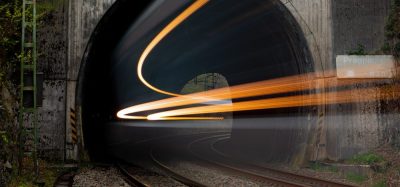Utilising UWB technology to boost train performance and increase capacity
Posted: 16 December 2020 | Humatics, Joffrey Lauthier | No comments yet
Joffrey Lauthier, Director of Sales, Rail & Transit at Humatics, explains how ultra-wideband (UWB) technology can be used to boost train performance, increase rail network capacity, provide critical positioning in GPS-denied areas and ensure safety by providing precise location of trains, workers, and materials.
What is UWB technology and how does it work?
Ultra-wideband (UWB) is a radio frequency technology that uses a very large bandwidth to transmit and receive small pulses that are used to calculate precise locations. UWB is a line-of-sight technology meaning that the transmitter and receiver need an unobstructed view of one another to achieve the most optimal performance. UWB has been proven to provide industry-leading positions within two centimetres from over 500 metres away.
UWB is a next generation positioning technology that can be fully integrated with Communications Based Train Control (CBTC) or used to augment GPS based signalling systems such as Positive Train Control (PTC) or the European Rail Traffic Management System (ERTMS) Level 3. UWB can and should be among the solutions implemented system-wide to boost performance, increase capacity, provide critical positioning in GPS-denied areas and ensure safety by providing precise location of trains, workers, and materials.
How does UWB technology accelerate and improve signal modernisation?
Specifically designed to address industrial localisation challenges, UWB technology delivers unprecedented precision and range, allowing us to solve mission-critical positioning and navigation challenges in harsh environments, such as rail and transit systems.
UWB is a next generation positioning technology that can be fully integrated with Communications Based Train Control (CBTC) or used to augment GPS based signalling systems such as Positive Train Control (PTC) or the European Rail Traffic Management System (ERTMS) Level 3.
At Humatics, our UWB based Rail Navigation System is easily integrated with other off-the-shelf sensors providing precise location information that can be consumed by train control systems. For transit line deployments, UWB beacons are installed along the wayside five feet off the track bed providing resistance to environmental effects such as flooding and snow. Once the wayside is installed it can be used similarly to a GPS satellite constellation, providing precise locations for any UWB equipped assets along the UWB coverage area.
Additionally, UWB location data can be used with minimum infrastructure in tandem with GPS positioning, providing precise locations where GPS struggles such as in urban, station, tunnel and dense forest areas.
We collaborate with partners to create integrated, safety-certified systems that solve our customer’s problems. Safety has no shortcuts and we work hand in hand with integrators to ensure we deliver a safe system, not just safe technology.
How can UWB technology be used beyond train positioning?
Precise localisation of trains is just the beginning of potential uses for UWB technology. A single, unified location system could help solve a variety of high-priority problems, improving reliability, reducing system maintenance, expediting completion of capital programmes, and enhancing safety.
Precise localisation of trains is just the beginning of potential uses for UWB technology.
Work trains can be an invisible entity moving through systems via radio calls and deliberate movements. Often, legacy signalling systems are left in place even when modernisation systems, such as CBTC, are installed to provide a safe means for work trains to travel. UWB allows a CBTC-lite installation to take place. Providing the positioning with no expensive or space hungry undercarriage equipment enabling work trains to flow seamlessly with revenue service traffic providing the visibility needed for safe operations.
In addition, it can be used to protect workers on the tracks. Currently, workers often identify where they are in the system using mile markers, that are inconsistent from one line to the next, which is confusing and potentially disorienting. UWB can be used to help workers pinpoint where they are in the tunnel more easily, and can provide warnings to train operators and workers on the tracks about each other’s proximity.
What did you learn from your pilot in New York City?
At Humatics we recently completed the first ever UWB positioning enabled signalling pilot with the MTA and Siemens on the Canarsie Line of the NYC subway. The pilot proved that UWB is an effective and superior train localisation technology compared with traditional balises and can be used to help trains run closer together speeding up the commutes of New Yorkers.
At Humatics we recently completed the first ever UWB positioning enabled signalling pilot with the MTA and Siemens on the Canarsie Line of the NYC subway.
The pilot equipped 5.5 miles of track with UWB infrastructure and four trains with Humatics navigation technology. UWB equipment is designed for fast installation and the entire wayside installation was performed by NYCT forces. In the fall of 2019, our system completed rigorous functional testing providing the accuracy and precision required to operate on the MTA subway system. To date, we have recorded over 1.5 million cumulative hours of wayside operation and over 60,000 hours of navigation operations.
The pilot was extremely successful, and it proved that our technology is safe, hearty enough for the New York transit environment, quick to install, and that it can reduce long-term maintenance needs.
Can you tell us a little bit more about Humatics?
Humatics is an industry-leading provider of microlocation and industrial ultra-wideband (UWB) mobility solutions. Our team includes the inventors of industrial UWB and some of the most well-respected experts in navigation technologies. Humatics was founded in 2015 by David Mindell, a professor of aeronautics and astronautics and the history of technology at the Massachusetts Institute of Technology, and Gary Cohen, a technology industry veteran, with the vision that the transit system of the 21st century being ‘lit up’ with location everywhere. Trains in yards, assets in shops, workers in tunnels, and revenue trains are equipped with inexpensive UWB beacons. All are continually visible through unified, real-time location software, which also incorporates location data from other sensors. This solution will rapidly return its investment through improved reliability of revenue service, reduced maintenance, faster completion of capital programmes, and improved safety.
Stay Connected with Global Railway Review — Subscribe for Free!
Get exclusive access to the latest rail industry insights from Global Railway Review — all tailored to your interests.
✅ Expert-Led Webinars – Gain insights from global industry leaders
✅ Weekly News & Reports – Rail project updates, thought leadership, and exclusive interviews
✅ Partner Innovations – Discover cutting-edge rail technologies
✅ Print/Digital Magazine – Enjoy two in-depth issues per year, packed with expert content
Choose the updates that matter most to you. Sign up now to stay informed, inspired, and connected — all for free!
Thank you for being part of our community. Let’s keep shaping the future of rail together!
Related topics
Big Data, Communications Based Train Control (CBTC), European Rail Traffic Management System (ERTMS), Operational Performance, Positive Train Control (PTC), Signalling, Control & Communications, Technology & Software







